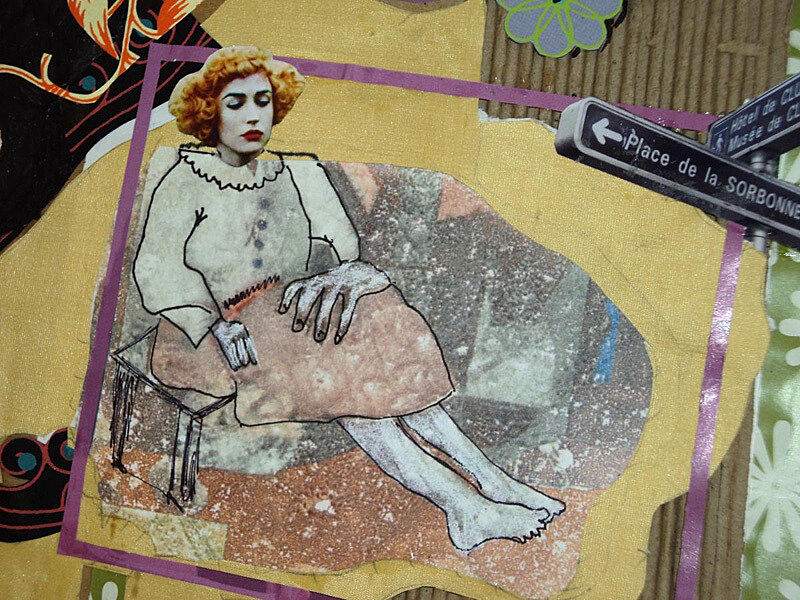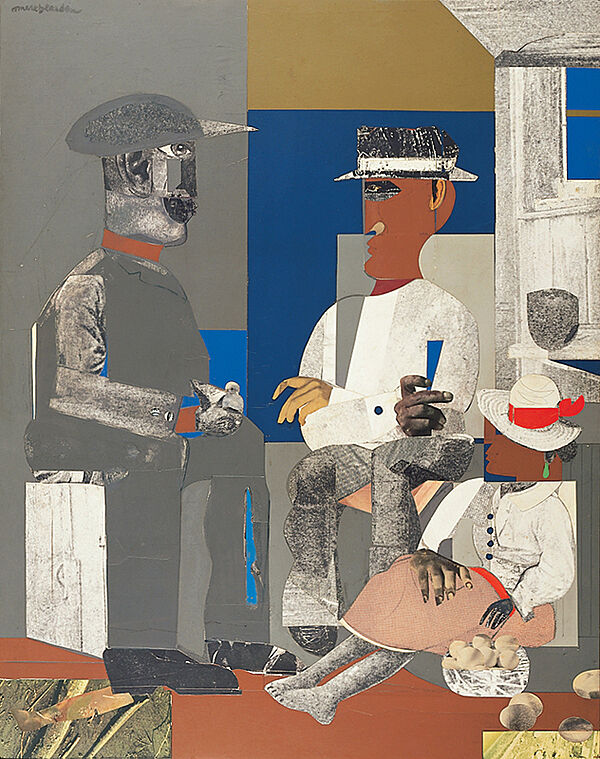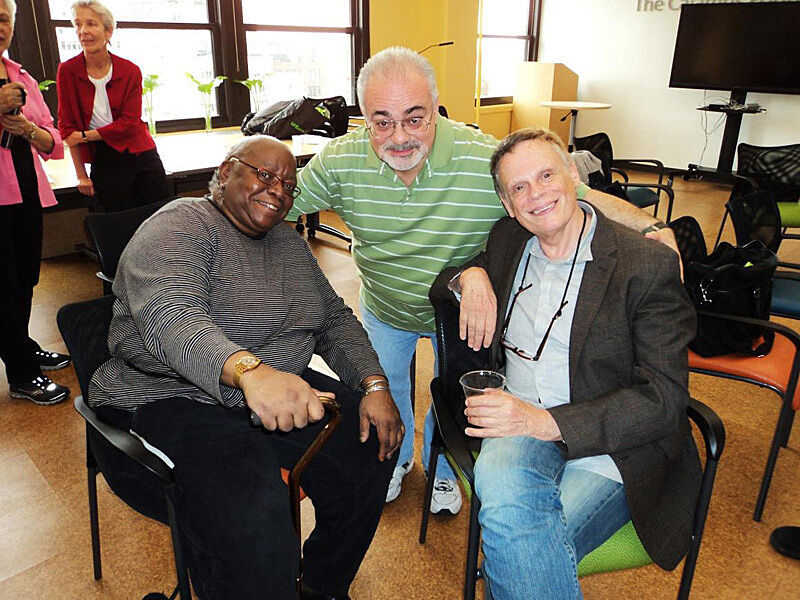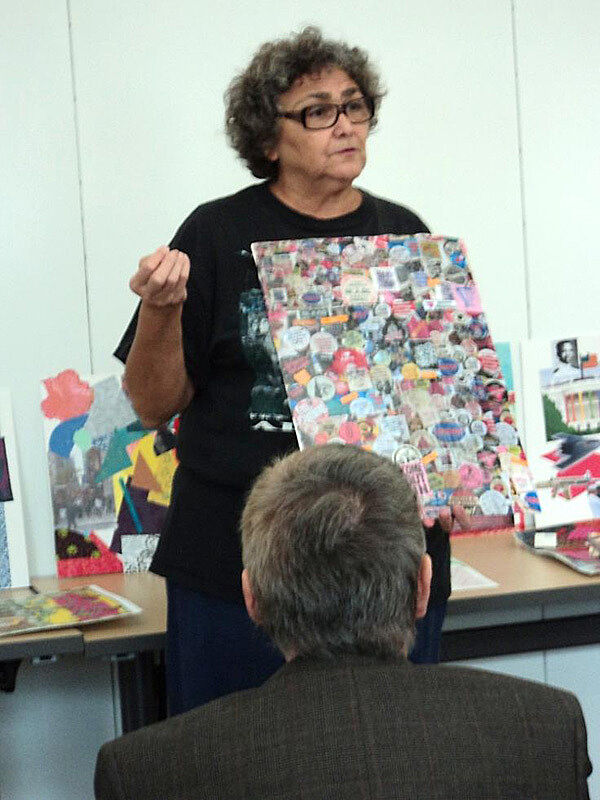Collage Course at SAGE Senior Center
Jul 25, 2012
In its mission to support life-long learning, Whitney Education offers collaborative Senior Programs to our Community Partners, a group of over fifty senior and community centers that provide care for elders in New York City. This spring, the Whitney worked with a group of fifteen seniors from SAGE (Services and Advocacy for Gay, Lesbian, Bisexual & Transgender Elders), the newest addition to the Museum’s roster of partner centers. As the first official community center for LGBT seniors in the United States, SAGE fosters connections between LGBT elders from all walks of life, providing an all-inclusive, warm environment for people to interact and thrive.
During the first session of a six-week course, Museum educator Mark Joshua Epstein gave a slide lecture on the history of American collage, discussing the work of Robert Rauschenberg and Romare Bearden, as well as Biennial 2012 artists Nicole Eisenman, Luther Price, and Tom Thayer. In their next session, the group visited the Museum and toured the Biennial exhibition, seeing some of these artists’ works firsthand.
Collage allows for the merging of found media—newsprint, magazine clippings, and photographs can be superimposed onto paper backgrounds or layered on top of one another, creating a whole from an accumulation of entirely independent parts. As in Bearden’s Eastern Barn, collage can tell personal or mythological stories, portray memories, and play with illusion. With these objectives in mind, the SAGE seniors began their own collage projects, investigating issues of memory and identity. They employed a variety of artistic strategies—some experimented with construction-paper forms, old photographs, magazine advertisements, ribbons, stickers, buttons, and other materials; others ventured out into the city to take photographs of themselves and their environments, using those images to connect their collages to the present moment.
On Wednesday, June 13, the program culminated with an informal exhibition and discussion, in which the seniors presented their works and explained their personal significance. Diverse in subject matter, their projects captured personal narratives. One man pasted together images of Barbie dolls and pink textures, relaying an anecdote about wearing his mother’s costume jewelry while playing the role of Cleopatra in a local theater production. Another senior collaged photographs of her collection of political buttons for feminist, LGBT, pro-choice, and anti-war causes (including “Whores Against Wars,” “Boycott Homophobia,” and a button from the National March on Washington for Lesbian and Gay Rights in October 1979). Yet another participant, a man who served in the U.S. Navy during the Vietnam War, created a military-themed collage, criticizing the 1993-2011 “Don’t ask, don’t tell” (DADT) policy on LGBT military personnel.
Other seniors addressed less politically charged themes, featuring snapshots from their childhoods in their collages. One woman, vibrant with a sharp sense of humor, showed an image of herself in a top hat, isolated from the world around her, bringing into focus the complex relationship of public homophobia and private solitude. Another woman pasted together images of African American singers who moved and motivated her, including the Temptations, Sarah Vaughn, Bessie Smith, and Nina Simone, dispersing photographic portraits of her relatives between them.
With the encouragement of Epstein and their contemporaries, each SAGE senior ultimately came away from the collage course with expanded art historical knowledge and an understanding of art as a gateway to self-expression and personal exploration.
By Sarah Konowitz, Public Programs Intern




